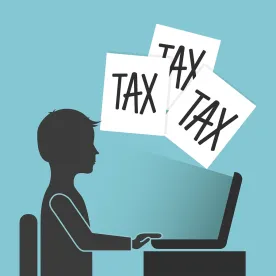New guidance in two areas informs and assists with group health plan administrators’ compliance efforts.
IRS Readjusts the (Already Adjusted) HSA Family Contribution Limit to $6,900
The Treasury Department (Treasury) and the Internal Revenue Service (IRS) have readjusted the 2018 family health savings account (HSA) contribution limit back to $6,900. The 2018 limit was first set at $6,900 last year, and was later adjusted to $6,850 in March 2018 as part of inflation adjustment changes made under the Tax Cuts and Jobs Act enacted at the end of 2017. The reduction in the contribution limit after the 2018 plan year had started for most health plans was financially and administratively burdensome for employers to administer. Individuals who contributed $6,900 but did not recover the $50 excess faced owing income tax plus an additional 20 percent tax on that $50 excess contribution.
As a result of the new guidance, individuals may treat $6,900 as the family HSA contribution level for 2018 without suffering adverse tax consequences. Employers who did not reduce employees’ $6,900 contribution elections need not take any further action. Employers who reduced employees’ contribution elections to $6,850 are not required to take further action (although they may want to communicate to employees impacted by such a reduction that they may choose to contribute the extra $50 directly to their HSAs, if permitted by the HSA trustee or custodian). Finally, the guidance also addresses the tax treatment of an excess contribution distribution from an HSA if an individual receives such a distribution based on the $6,850 limit and chooses not to re-contribute that amount to the HSA.
Mental Health Parity and Addiction Equity
The U.S. Department of Labor (DOL), U.S. Department of Health and Human Services (HHS), and Treasury (collectively, the Departments) recently issued various pieces of guidance related to the Mental Health Parity and Addiction Equity Act (MHPAEA). This signals the Departments’ enhanced focus on MHPAEA compliance and enforcement, in connection with directives under the 21st Century Cures Act to the Departments to take steps to improve group health plan compliance with the MHPAEA.
The MHPAEA requires that group health plans provide mental health and substance use disorder (MH/SUD) benefits in parity with other medical/surgical benefits. That is, group health plans must ensure that the financial requirements and treatment limitations on MH/SUD benefits that the plans provide are no more restrictive than those on medical or surgical benefits. Examples of financial requirements are deductibles, copays and coinsurance. Treatment limitations include limits on benefits based on the frequency of treatment, number of visits, days of coverage, days in a waiting period, or other similar limits on the scope or duration of treatment. Quantitative treatment limits (QTLs) are expressed numerically, such as 50 outpatient visits per year. Non-quantitative treatment limits (NQTL) otherwise limit the scope or duration of benefits for treatment, such as medical management standards based on medical necessity or appropriateness or whether a treatment is experimental or investigative, or limitations on prescription drug formulary design and use of “step-therapy” protocols or “fail-first” policies, just to name a few. Parity as to QTLs and NQTLs is analyzed separately, and NQTLs are often more difficult to evaluate. The guidance issued by the Departments provides group health plan administrators with useful information on which to base current compliance efforts. These include:
Proposed ACA FAQs, Part 39: Mental Health and Substance Use Disorder Parity Implementation and the 21st Century Cures Act
This is a set of 12 FAQs primarily addressing NQTLs under the MHPAEA. The proposed FAQs address topics related to NQTLs such as exclusions of specific treatments for certain conditions (e.g., autism spectrum disorder), evidentiary standards related to experimental or investigative determinations, medical necessity determinations for prescription drugs, step-therapy, and standards for network provider participation. The Departments seek public comment on the proposed FAQs by June 22, 2018.
Sample Draft Mental Health and Substance Use Disorder Parity Disclosure Request
This is a draft model disclosure request that a medical plan participant may use to send to his or her employer’s medical plan to request detailed information on MH/SUD benefits coverage under the plan. The request form includes very specific information on health plan limitations or terms related to MH/SUD benefits of the plan. Plan administrators should review and consider their ability to quickly respond to the sample list of requests (which we have abbreviated here):
- Provide the specific plan language regarding the limitation and identify all of the medical/surgical and MH/SUD benefits to which it applies in the relevant benefit classification.
- Identify the factors used in the development of the limitation.
- Identify the evidentiary standards used to evaluate the factors.
- Identify the methods and analysis used in the development of the limitation.
- Provide any evidence and documentation to establish that the limitation is not applied more stringently, as written and in operation, to MH/SUD benefits than to medical and surgical benefits.
Keep in mind that a plan administrator has up to 30 days to respond to such a request, so assessing the health plan’s provisions and ability to provide a response (which will likely involve coordinating with a third-party administrator (TPA) or insurer) within 30 days is imperative. Determining parity for NQTLs often involves administrative policies and procedures that may not be part of the formal, written health plan document or SPD. While the draft disclosure request form is in proposed form, participants may use it to request information about MH/SUD benefits from their health plans.
The Office of Management and Budget is seeking comments on the draft disclosure request form by June 22, 2018.
Self-Compliance Tool for the Mental Health Parity and Addiction Equity Act
This is a comprehensive, 23-page guide to understanding MHPAEA rules applicable to group health plans, and evaluating a group health plan’s compliance. This tool includes compliance tips and examples of plan terms that do or do not comply. The compliance tips include how to respond to a MH/SUD benefits parity disclosure request.
This self-compliance tool may be helpful for health plan administrators to work through plan exclusions and policies that may violate the MHPAEA. A plan administrator may use it to evaluate its TPA’s or insurer’s policies and procedures related to MH/SUD benefits, as part of the plan administrator’s routine monitoring of the TPA’s services. We have seen a recent focus on reviewing coverage for autism and ABA therapy, residential treatment center benefits, and sufficiency of MH/SUD provider networks, and many other plan terms may be implicated as well.
Enforcement
In addition to the above, the Departments have issued several reports on existing and future enforcement:
- Employee Benefits Security Administration’s (EBSA) Fiscal Year 2017 MHPAEA Enforcement Fact Sheet – Provides examples of MHPAEA enforcement actions undertaken by EBSA.
- HHS’ MHPAEA Enforcement Report – Provides examples of MHPAEA enforcement actions undertaken by HHS.
- HHS and DOL have also issued reports with a clear emphasis on recent and planned actions to maintain momentum on parity enforcement and implementation:
- HHS’ 21st Century Cures Act: Section 13002 Action Plan For Enhanced Enforcement Of MH/SUD Coverage.
- 2018 DOL Report to Congress: Pathway to Full Parity.
Parity Pays – Plan administrators that fail to comply with a participant’s disclosure request within 30 days may be subject to penalties of $110 per day. Plans that fail to comply with MHPAEA parity requirements may be subject to an excise tax of $100 per day per affected participant, and are required to file Form 8928 with the IRS. This excise tax is imposed on the employer plan sponsor (not the insurer or TPA).





 />i
/>i
